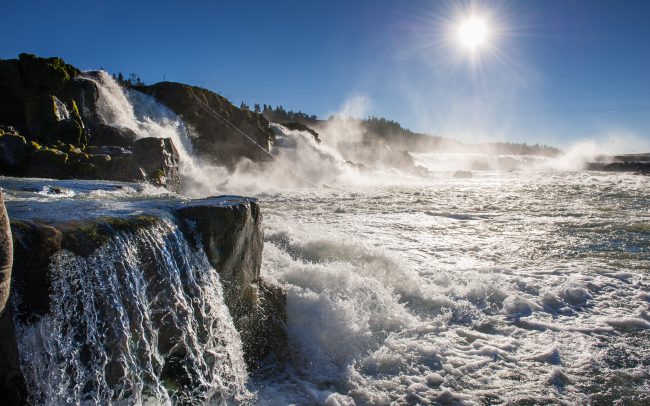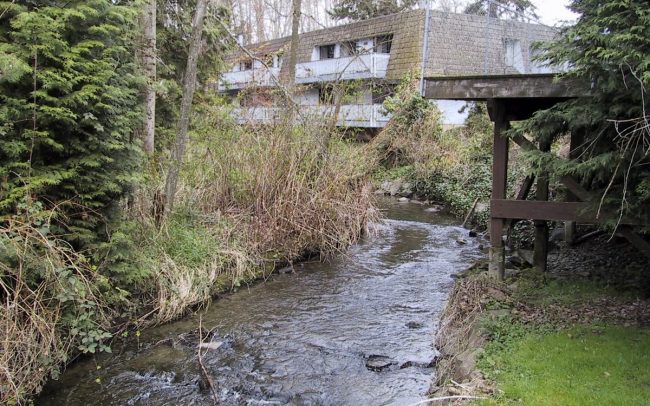RIPPLE: Population Dynamics Modeling
RIPPLE is a powerful, analytical tool to help inform anadromous salmonid population restoration and recovery planning. RIPPLE uses an ecological-process-based approach to model the effects of historical, current, and potential future watershed conditions as they affect salmonid populations.
How does it work?
Our basic conceptual model for stream and salmonid restoration is to reinitiate geomorphic and ecological processes that create and maintain habitats required by each salmonid species at various life history stages. RIPPLE attempts to quantitatively apply this conceptual model across multiple spatial scales. Geomorphic characteristics, such as channel gradient and drainage area, and physical habitat characteristics are combined with density and suitability criteria by species and life stage, to predict reach-specific historical, current, and potential future salmon habitat. RIPPLE then employs a multi-stage, stock-production model to predict long-term average abundance for each life stage, which can be displayed on a map, and a time-series of total abundance for each life stage, which can be viewed as a series of graphs (see photo gallery). RIPPLE can also produce a single number, such as “long-term average escapement” for the purposes of assessment or comparison.
Why use RIPPLE?
RIPPLE integrates geomorphological information with aquatic habitat and biological data, and the anthropogenic factors affecting them, for an overall understanding of how these attributes affect salmon populations. Using the output of RIPPLE, we can more effectively develop successful restoration strategies and measures, assess current conditions quantitatively to help prioritize management actions, and evaluate restoration and conservation options under various scenarios.
RIPPLE was developed by Stillwater Sciences together with scientists at the University of California, Berkeley. While the focus species for its development was anadromous salmonids, RIPPLE is applicable to other aquatic species, as we have explored on a limited basis with such species as Pacific lamprey and California freshwater shrimp. The model is freely available and can be downloaded from the website of the National Center for Earth-surface Dynamics at http://software.nced.umn.edu/ripple/download/index.html.
RELATED SERVICES:









